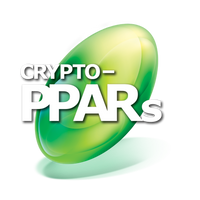Antineoplastic Properties
The Theory Behind Antineoplastons
Antineoplastons are experimental compounds introduced in the 1970s by Dr. Stanislaw Burzynski. Originally derived from human peptides and amino acids, they were designed to support the body’s ability to regulate abnormal cell growth. While these compounds have been studied for decades, they remain unapproved by the FDA due to limited independent evidence and ongoing controversy.
These substances are believed to work by restoring cellular differentiation, influencing DNA expression, and possibly competing with nutrients like glutamine that fuel tumor growth. However, despite initial promise, antineoplastons remain a theoretical therapy rather than a widely accepted treatment.

PPARγ: A Natural Pathway for Cell Regulation
Peroxisome Proliferator-Activated Receptor Gamma (PPARγ) is a nuclear receptor found in the body that regulates genes involved in inflammation, metabolism, and cell development. Unlike antineoplastons, PPARγ is well-studied and has been the subject of FDA-approved drug development, particularly for conditions like diabetes.

What makes PPARγ especially relevant is its natural antineoplastic-like potential. A 2004 article in The Lancet Oncology highlighted several mechanisms by which PPARγ activation may help regulate cancer cell behavior:
-
Suppressing abnormal cell growth
-
Encouraging apoptosis (programmed cell death)
-
Reducing inflammation
-
Limiting angiogenesis (tumor blood supply)
While not classified as an antineoplaston, PPARγ performs some of the same cellular regulatory functions, offering a natural, legal, and evidence-supported alternative to experimental therapies.

Chlorella Sorokiniana W-87 and PPARγ
Chlorella Sorokiniana W-87, is a natural microalga that contains compounds known to activate PPARγ. While we do not make medical claims, research suggests that PPARγ activity may help support normal cellular function — a key goal in maintaining long-term health and balance.
Unlike synthetic or unproven interventions, PPARγ pathways are recognized in scientific literature and have been explored in FDA-reviewed research for various therapeutic applications.
Final Thoughts
Antineoplastons introduced the idea of using the body’s own chemistry to fight cancer. Though that therapy remains unverified, PPARγ offers a real and research-backed pathway toward similar goals: regulating cell behavior, reducing harmful inflammation, and promoting natural defense mechanisms — all without departing from scientifically accepted frameworks.
If you're looking for natural support for cell health, ingredients like Chlorella sorokiniana — rich in active PPARγ compounds — may offer a promising direction.
Scientific Citations
Tontonoz & Spiegelman (2008) – The Biology of PPARγ
Tontonoz P, Spiegelman BM. Fat and beyond: the diverse biology of PPARgamma. Annu Rev Biochem. 2008;77:289-312. doi: 10.1146/annurev.biochem.77.061307.091829. PMID: 18518822.
Chlorella sorokiniana Extract Prevents Cisplatin-Induced Myelotoxicity In Vitro and In Vivo
Lin SH, Li MH, Chuang KA, Lin NH, Chang CH, Wu HC, Chao YH, Lin CC, Pan IH, Perng MD, Wen SF. Chlorella sorokiniana Extract Prevents Cisplatin-Induced Myelotoxicity In Vitro and In Vivo. Oxid Med Cell Longev. 2020 Jan 25;2020:7353618. doi: 10.1155/2020/7353618. PMID: 32047579; PMCID: PMC7003270.
The Lancet Oncology – PPARγ and Cancer Research (Vol 5, July 2004)
Grommes, C., Landreth, G. E., & Heneka, M. T. (2004). Antineoplastic effects of peroxisome proliferator-activated receptor γ agonists. The Lancet Oncology, 5(7), 419–429.
The Lancet Oncology Vol 5 July 2004 issue
The Lancet Oncology – (Vol 19, June 2018)
Antineoplastons: when is enough enough?
Figg, W. D. (2018). The Lancet Oncology, 19(6), 733–734.
View article in The Lancet Oncology (June 2018)
Additional Reading (Public Sources)
eMedicineHealth – Antineoplastons Overview
Medical News Today – What are Antineoplastons?
National Cancer Institute – Antineoplaston Therapy
FDA – Structure/Function Claims on Dietary Supplements
